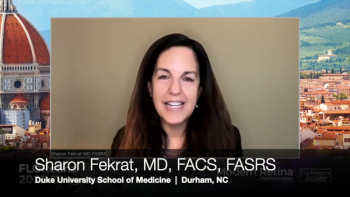
Artificial tears contamination risk
Multiple-use packs of preservative-free artificial tears are susceptible to contamination, according to study results published in the November issue of the British Journal of Ophthalmology.
Multiple-use packs of preservative-free artificial tears are susceptible to contamination, according to study results published in the November issue of the British Journal of Ophthalmology.
The team found microbial contamination in 2.0% of the bottles (n=5). All contaminations were found in bottles containing the preservative-free tears, and were either coagulase-negative staphylococcus or gram-negative acinetobacter. After multivariate regression analysis it emerged that age and fingertip touch were the factors with the greatest influence on contamination rates.
The researchers concluded that resealable packs of preservative-free artificial tears, especially when used by older patients and/or when fingertip touch was significant, are prone to infection in daily and multiple use settings.
Newsletter
Get the essential updates shaping the future of pharma manufacturing and compliance—subscribe today to Pharmaceutical Technology and never miss a breakthrough.













































